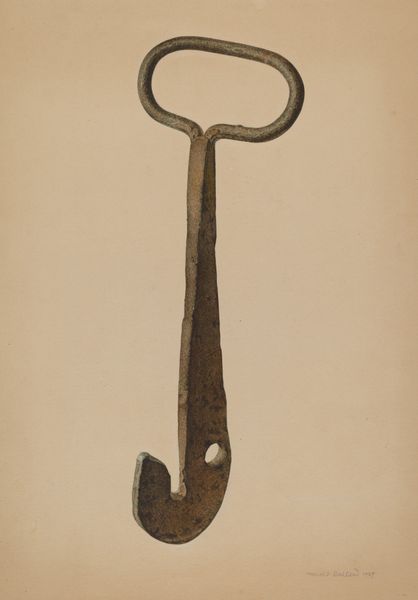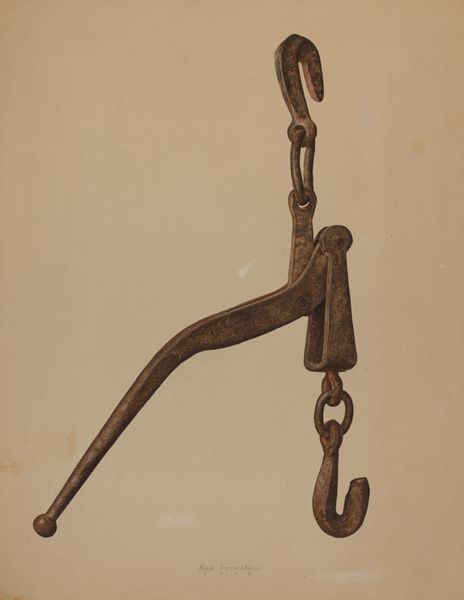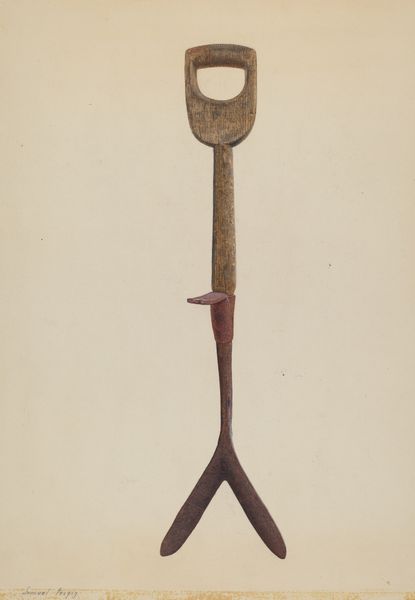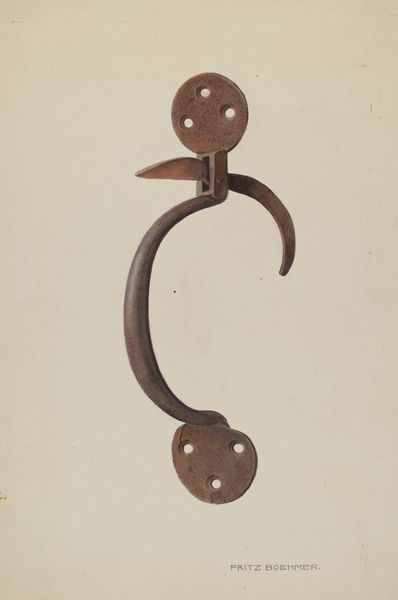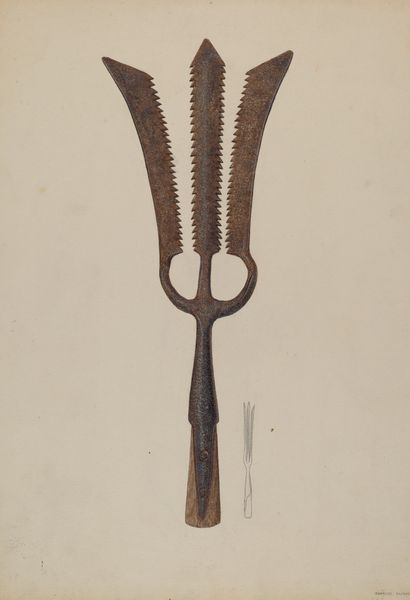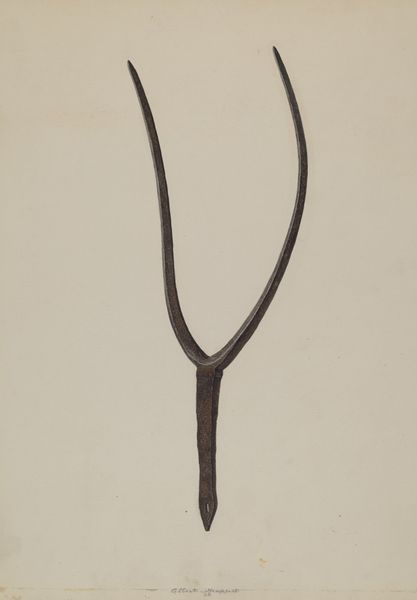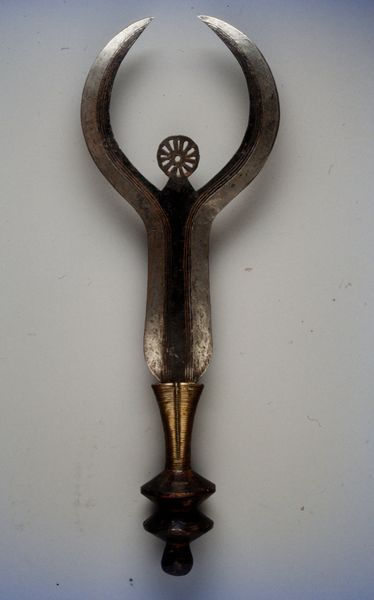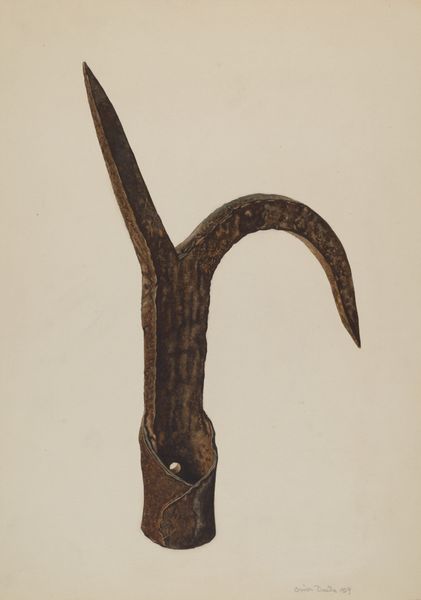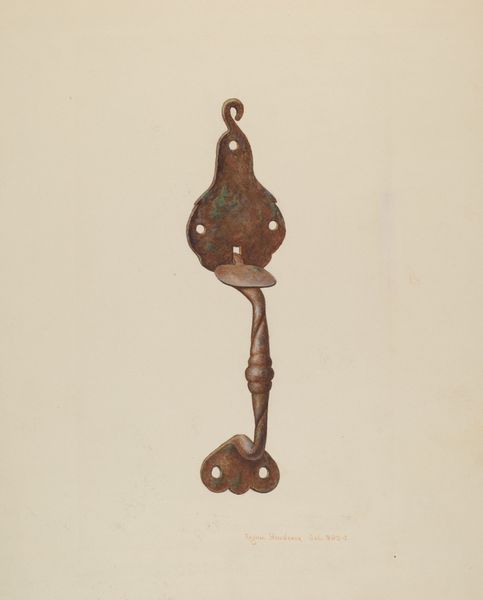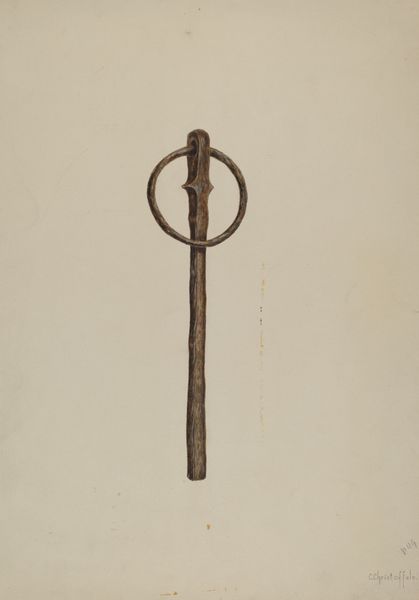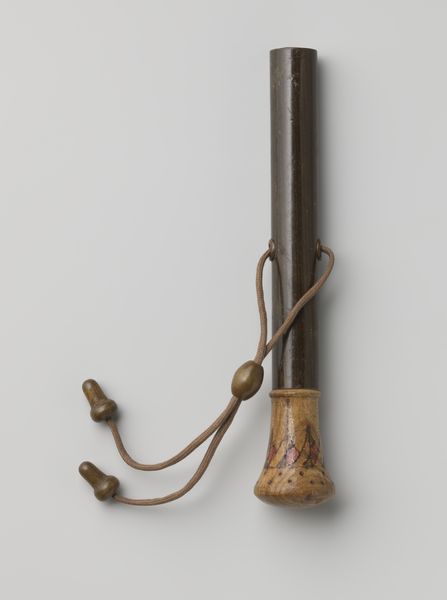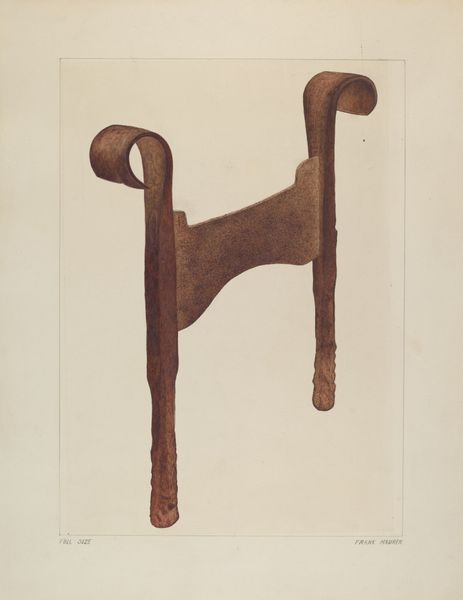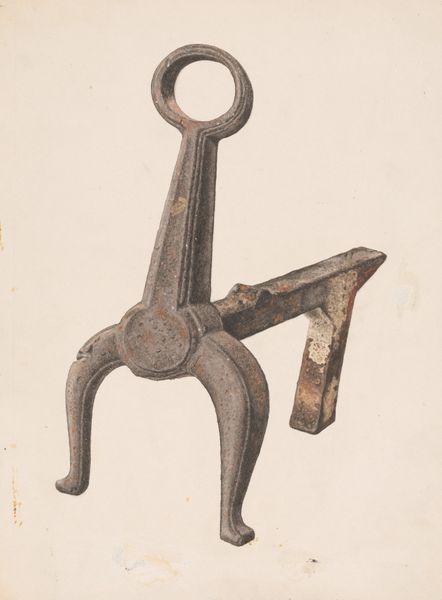
drawing, watercolor
#
drawing
#
watercolor
#
watercolor
#
realism
Dimensions: overall: 35.5 x 28.2 cm (14 x 11 1/8 in.) Original IAD Object: 12 1/2" high; 4 1/2" wide
Copyright: National Gallery of Art: CC0 1.0
Curator: Here we have William Frank's "Snubber for Bull," a watercolor drawing dating to approximately 1942. What strikes you about it? Editor: Well, immediately I'm drawn to the object's vertical orientation and the surprisingly soft tonality given its material, what appears to be aged metal. The texture is also remarkable; I find myself studying the composition of its shapes. Curator: It's interesting to consider the possible symbolism within this seemingly simple representation. Frank created this piece in the 1940s, a time of massive disruption, even crisis, in world history, and of dramatic technological change, yet he chose to focus on a relic, a piece of outdated agricultural technology. Editor: I agree that context is crucial. Still, looking at it formally, the interplay of the snubber’s curves against its harsh metallic body creates tension and balance simultaneously. How do the curves contrast with what they were supposed to perform, considering the subjugation of another living being, an animal? The very shapes that seem ornamental point to its historical purpose. Curator: Exactly! The beauty of the form belies a history of human dominion over animals. It represents a certain brutal relationship—control and domination are central themes, not just literally within the farming context, but as reflections of power structures in society as a whole. The historical context of this particular implement implicates specific cultural relationships. Editor: Yes, I'm compelled to contemplate this relationship, too. As a final point, I might add that the artist's masterful technique lends to the artifact a poignant quality that asks for such cultural inquiries in the first place. Curator: Indeed, William Frank's skill invites viewers to contemplate not only the formal, intrinsic values, but also this item's place in the larger narrative. Editor: The details of its construction point to that difficult yet imperative work of uncovering, of unraveling—historical truths.
Comments
No comments
Be the first to comment and join the conversation on the ultimate creative platform.
